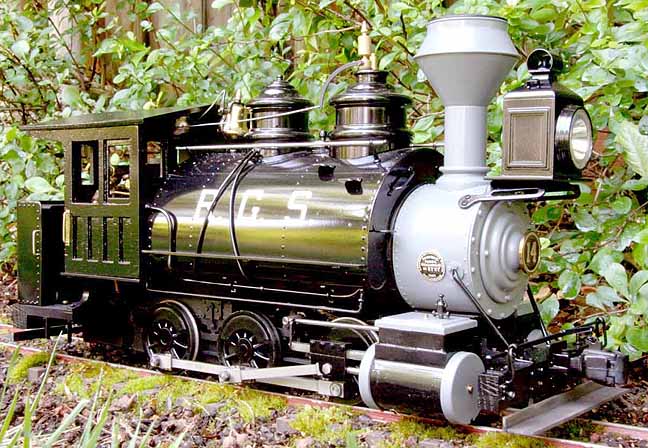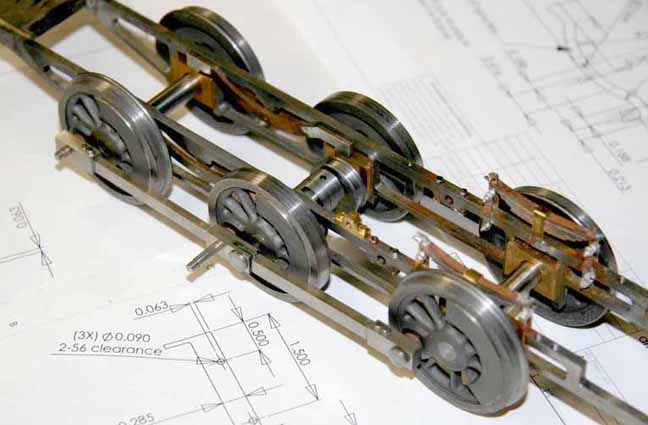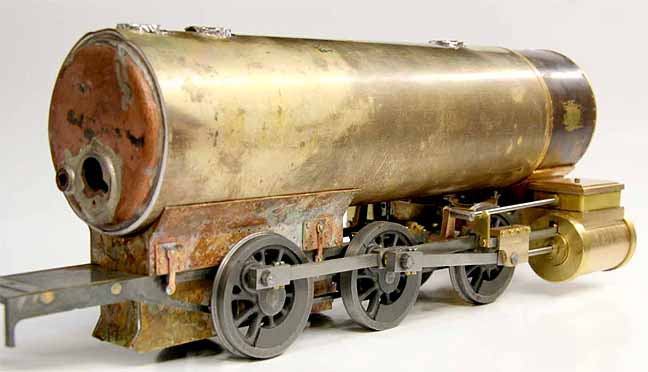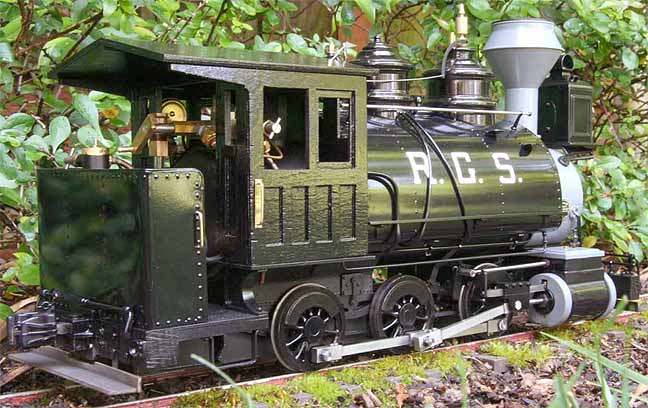Back to Sidestreet Bannerworks
Click here to find out how your engine can be featured!
.


Rio Grande Southern No. 14
by Rob Lenicheck
Palo Alto, California
Photos by the author
June, 2011
The legendary Rio Grande Southern narrow-gauge railroad was built in Southwestern Colorado in the 1880s to service the many silver and gold mines in the region. This 0-6-0T tank engine was one of the earliest ones on the line but was built originally for the narrow-gauge Denver & Rio Grande railroad as their No. 105. Evidently the D&RG never saw much use for “The Goat,” as it was nicknamed, and it was sold to the Rio Grande Southern in 1891.
This was the first engine into the town of Rico during the construction of the RGS. It was little used after the railroad was completed and was sold to the Yellow Pine Lumber Company of Mobile, Alabama. Little is known about the engine's fate thereafter.
The model
After visiting Diamondhead a few years ago, I realized that an engine with more portability should be one of the requirements for my first scratchbuilding effort. I was already modeling in 1:20.3, so I continued with that scale and drew up a more-or-less complete 3D CAD model, based on the excellent drawings of the RGS No. 14 by Oscar Neubert, found in the back of Mal Ferrell's book, Silver San Juan. I equate the time and work I spent designing the CAD model to painting a house -- it's 90% prep work and 10% actual painting. Having the drawings to work from really saved time and made sure the model would all fit together.
In order to make the engine as easy to fabricate as possible, the design is a basically a simple engine, with a gas-fired, single flue boiler and slip-eccentric valve gear. I scratchbuilt almost all of the parts except some of the cosmetic boiler accessories (light, stack, and bell). I was lucky in that the close proximity of the gas tank to the back of the burner heats the gas enough to maintain the pressure throughout the run.
The rather large cylinders are a remnant of the early design. Once I had completed the engine enough to fire it, I realized that the 3/4"-bore cylinders I had built were too demanding on the steam volume. I subsequently sleeved the cylinders down to a 1/2” bore but kept the exterior as is.
The cab, like the prototype's, is made of wood. I used high-heat Dupli-Color automotive paint, with no primer, to paint the engine. This seems to be holding up well.
Running the engine is a pleasure. It needs no attention after it gets started. However, it does require a deft hand and a few seconds to get started.
Here's a video of RGS No. 14 in action. If, for some reason you can't view it, click here.
|
|
|
| Builder | Rob Lenicheck (USA) |
| Date completed | 2008 |
| Gauge | 45 mm (gauge 1) |
| Scale | 1:20.3 |
| Boiler | Single flue |
| Fittings | Safety valve, water glass, pressure gauge, blowdown |
| Fuel | Butane |
| Blow-off pressure | 60 psi |
| Cylinders | Two double-acting with piston-valves |
| Reversing gear | Slip eccentric |
| Lubricator | Hydrostatic (pressurized displacement) |








Back to Sidestreet Bannerworks
Click here to find out how your engine can be featured!
This page and its contents
Copyright Sidestreet Bannerworks, 2011